Daniel Hsu
Microsoft Research
Learning Compositional Functions with Transformers from Easy-to-Hard Data
May 29, 2025Abstract:Transformer-based language models have demonstrated impressive capabilities across a range of complex reasoning tasks. Prior theoretical work exploring the expressive power of transformers has shown that they can efficiently perform multi-step reasoning tasks involving parallelizable computations. However, the learnability of such constructions, particularly the conditions on the data distribution that enable efficient learning via gradient-based optimization, remains an open question. Towards answering this question, in this work we study the learnability of the $k$-fold composition task, which requires computing an interleaved composition of $k$ input permutations and $k$ hidden permutations, and can be expressed by a transformer with $O(\log k)$ layers. On the negative front, we prove a Statistical Query (SQ) lower bound showing that any SQ learner that makes only polynomially-many queries to an SQ oracle for the $k$-fold composition task distribution must have sample size exponential in $k$, thus establishing a statistical-computational gap. On the other hand, we show that this function class can be efficiently learned, with runtime and sample complexity polynomial in $k$, by gradient descent on an $O(\log k)$-depth transformer via two different curriculum learning strategies: one in which data consists of $k'$-fold composition functions with $k' \le k$ presented in increasing difficulty, and another in which all such data is presented simultaneously. Our work sheds light on the necessity and sufficiency of having both easy and hard examples in the data distribution for transformers to learn complex compositional tasks.
Survey on Algorithms for multi-index models
Apr 07, 2025Abstract:We review the literature on algorithms for estimating the index space in a multi-index model. The primary focus is on computationally efficient (polynomial-time) algorithms in Gaussian space, the assumptions under which consistency is guaranteed by these methods, and their sample complexity. In many cases, a gap is observed between the sample complexity of the best known computationally efficient methods and the information-theoretical minimum. We also review algorithms based on estimating the span of gradients using nonparametric methods, and algorithms based on fitting neural networks using gradient descent
Learning Gaussian Multi-Index Models with Gradient Flow: Time Complexity and Directional Convergence
Nov 13, 2024Abstract:This work focuses on the gradient flow dynamics of a neural network model that uses correlation loss to approximate a multi-index function on high-dimensional standard Gaussian data. Specifically, the multi-index function we consider is a sum of neurons $f^*(x) \!=\! \sum_{j=1}^k \! \sigma^*(v_j^T x)$ where $v_1, \dots, v_k$ are unit vectors, and $\sigma^*$ lacks the first and second Hermite polynomials in its Hermite expansion. It is known that, for the single-index case ($k\!=\!1$), overcoming the search phase requires polynomial time complexity. We first generalize this result to multi-index functions characterized by vectors in arbitrary directions. After the search phase, it is not clear whether the network neurons converge to the index vectors, or get stuck at a sub-optimal solution. When the index vectors are orthogonal, we give a complete characterization of the fixed points and prove that neurons converge to the nearest index vectors. Therefore, using $n \! \asymp \! k \log k$ neurons ensures finding the full set of index vectors with gradient flow with high probability over random initialization. When $ v_i^T v_j \!=\! \beta \! \geq \! 0$ for all $i \neq j$, we prove the existence of a sharp threshold $\beta_c \!=\! c/(c+k)$ at which the fixed point that computes the average of the index vectors transitions from a saddle point to a minimum. Numerical simulations show that using a correlation loss and a mild overparameterization suffices to learn all of the index vectors when they are nearly orthogonal, however, the correlation loss fails when the dot product between the index vectors exceeds a certain threshold.
Interactive Machine Teaching by Labeling Rules and Instances
Sep 08, 2024Abstract:Weakly supervised learning aims to reduce the cost of labeling data by using expert-designed labeling rules. However, existing methods require experts to design effective rules in a single shot, which is difficult in the absence of proper guidance and tooling. Therefore, it is still an open question whether experts should spend their limited time writing rules or instead providing instance labels via active learning. In this paper, we investigate how to exploit an expert's limited time to create effective supervision. First, to develop practical guidelines for rule creation, we conduct an exploratory analysis of diverse collections of existing expert-designed rules and find that rule precision is more important than coverage across datasets. Second, we compare rule creation to individual instance labeling via active learning and demonstrate the importance of both across 6 datasets. Third, we propose an interactive learning framework, INTERVAL, that achieves efficiency by automatically extracting candidate rules based on rich patterns (e.g., by prompting a language model), and effectiveness by soliciting expert feedback on both candidate rules and individual instances. Across 6 datasets, INTERVAL outperforms state-of-the-art weakly supervised approaches by 7% in F1. Furthermore, it requires as few as 10 queries for expert feedback to reach F1 values that existing active learning methods cannot match even with 100 queries.
One-layer transformers fail to solve the induction heads task
Aug 26, 2024Abstract:A simple communication complexity argument proves that no one-layer transformer can solve the induction heads task unless its size is exponentially larger than the size sufficient for a two-layer transformer.
Transformers Provably Learn Sparse Token Selection While Fully-Connected Nets Cannot
Jun 11, 2024



Abstract:The transformer architecture has prevailed in various deep learning settings due to its exceptional capabilities to select and compose structural information. Motivated by these capabilities, Sanford et al. proposed the sparse token selection task, in which transformers excel while fully-connected networks (FCNs) fail in the worst case. Building upon that, we strengthen the FCN lower bound to an average-case setting and establish an algorithmic separation of transformers over FCNs. Specifically, a one-layer transformer trained with gradient descent provably learns the sparse token selection task and, surprisingly, exhibits strong out-of-distribution length generalization. We provide empirical simulations to justify our theoretical findings.
Group-wise oracle-efficient algorithms for online multi-group learning
Jun 07, 2024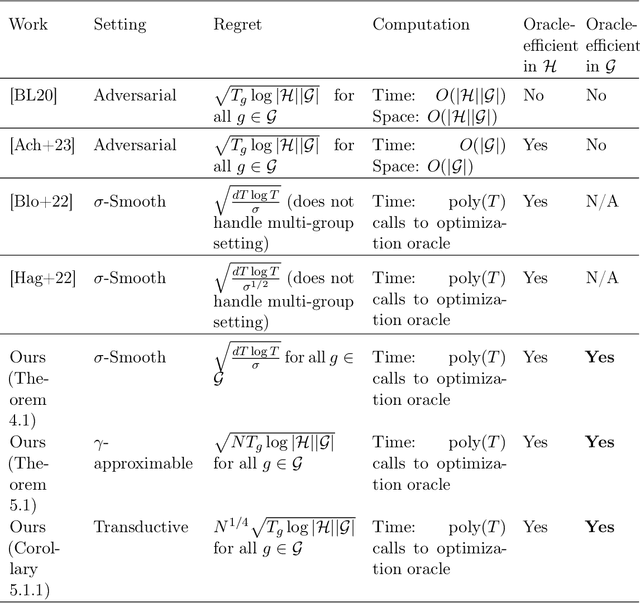
Abstract:We study the problem of online multi-group learning, a learning model in which an online learner must simultaneously achieve small prediction regret on a large collection of (possibly overlapping) subsequences corresponding to a family of groups. Groups are subsets of the context space, and in fairness applications, they may correspond to subpopulations defined by expressive functions of demographic attributes. In contrast to previous work on this learning model, we consider scenarios in which the family of groups is too large to explicitly enumerate, and hence we seek algorithms that only access groups via an optimization oracle. In this paper, we design such oracle-efficient algorithms with sublinear regret under a variety of settings, including: (i) the i.i.d. setting, (ii) the adversarial setting with smoothed context distributions, and (iii) the adversarial transductive setting.
Seasonality Patterns in 311-Reported Foodborne Illness Cases and Machine Learning-Identified Indications of Foodborne Illnesses from Yelp Reviews, New York City, 2022-2023
May 09, 2024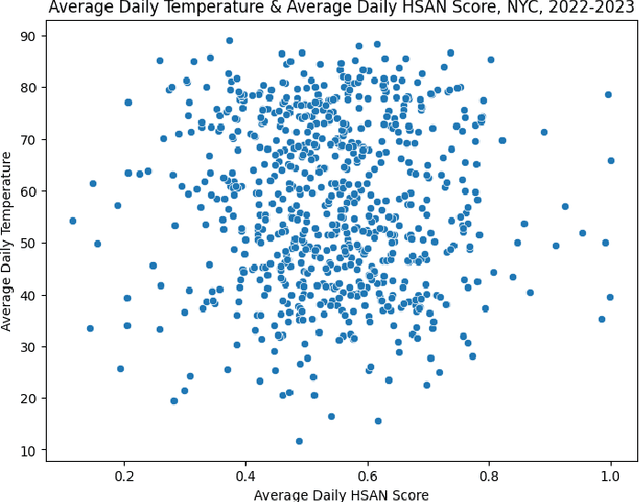
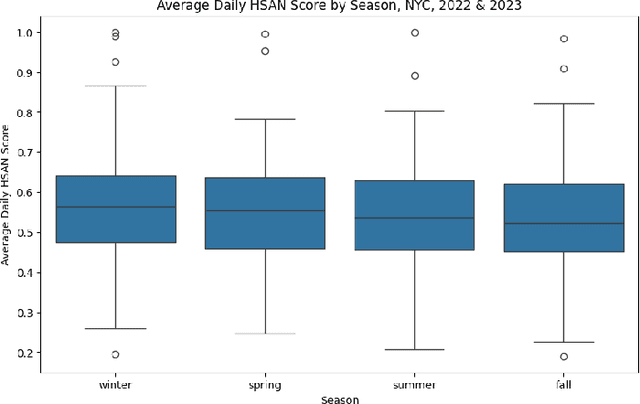
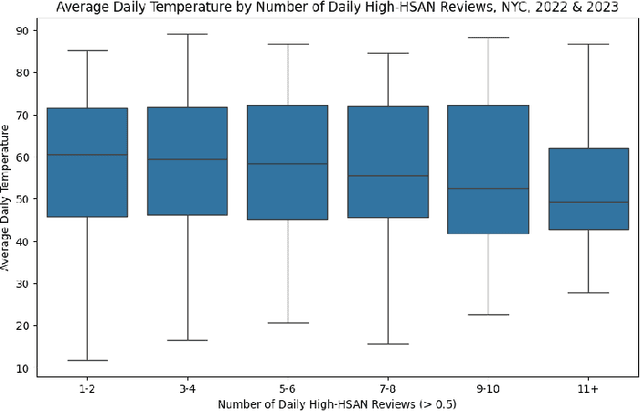
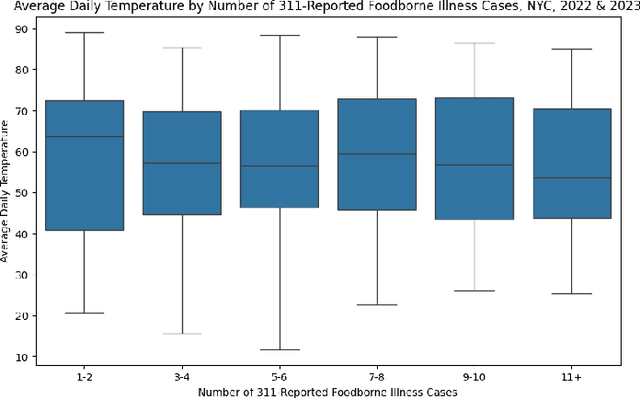
Abstract:Restaurants are critical venues at which to investigate foodborne illness outbreaks due to shared sourcing, preparation, and distribution of foods. Formal channels to report illness after food consumption, such as 311, New York City's non-emergency municipal service platform, are underutilized. Given this, online social media platforms serve as abundant sources of user-generated content that provide critical insights into the needs of individuals and populations. We extracted restaurant reviews and metadata from Yelp to identify potential outbreaks of foodborne illness in connection with consuming food from restaurants. Because the prevalence of foodborne illnesses may increase in warmer months as higher temperatures breed more favorable conditions for bacterial growth, we aimed to identify seasonal patterns in foodborne illness reports from 311 and identify seasonal patterns of foodborne illness from Yelp reviews for New York City restaurants using a Hierarchical Sigmoid Attention Network (HSAN). We found no evidence of significant bivariate associations between any variables of interest. Given the inherent limitations of relying solely on user-generated data for public health insights, it is imperative to complement these sources with other data streams and insights from subject matter experts. Future investigations should involve conducting these analyses at more granular spatial and temporal scales to explore the presence of such differences or associations.
Transformers, parallel computation, and logarithmic depth
Feb 14, 2024Abstract:We show that a constant number of self-attention layers can efficiently simulate, and be simulated by, a constant number of communication rounds of Massively Parallel Computation. As a consequence, we show that logarithmic depth is sufficient for transformers to solve basic computational tasks that cannot be efficiently solved by several other neural sequence models and sub-quadratic transformer approximations. We thus establish parallelism as a key distinguishing property of transformers.
Multi-group Learning for Hierarchical Groups
Feb 01, 2024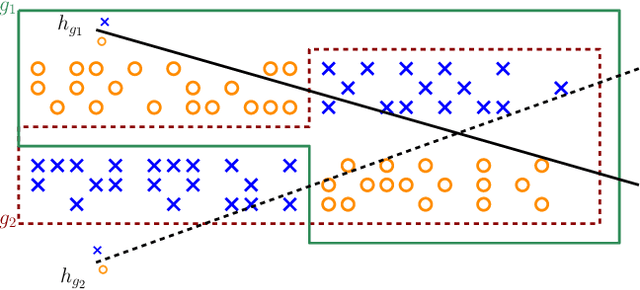

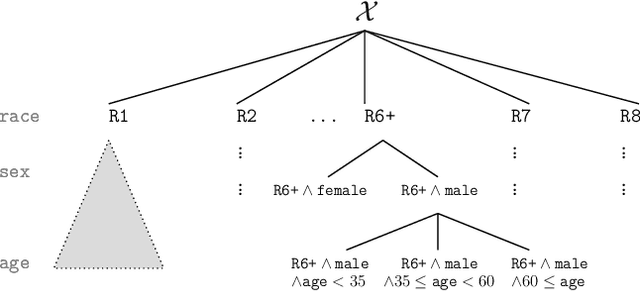
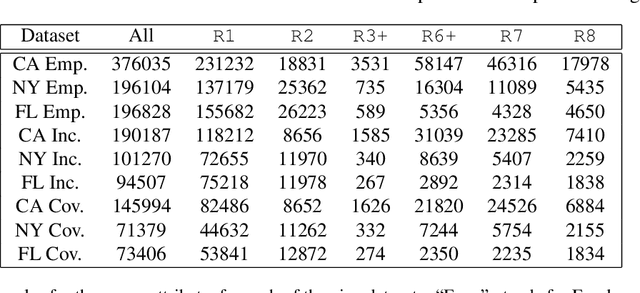
Abstract:The multi-group learning model formalizes the learning scenario in which a single predictor must generalize well on multiple, possibly overlapping subgroups of interest. We extend the study of multi-group learning to the natural case where the groups are hierarchically structured. We design an algorithm for this setting that outputs an interpretable and deterministic decision tree predictor with near-optimal sample complexity. We then conduct an empirical evaluation of our algorithm and find that it achieves attractive generalization properties on real datasets with hierarchical group structure.
 Add to Chrome
Add to Chrome Add to Firefox
Add to Firefox Add to Edge
Add to Edge